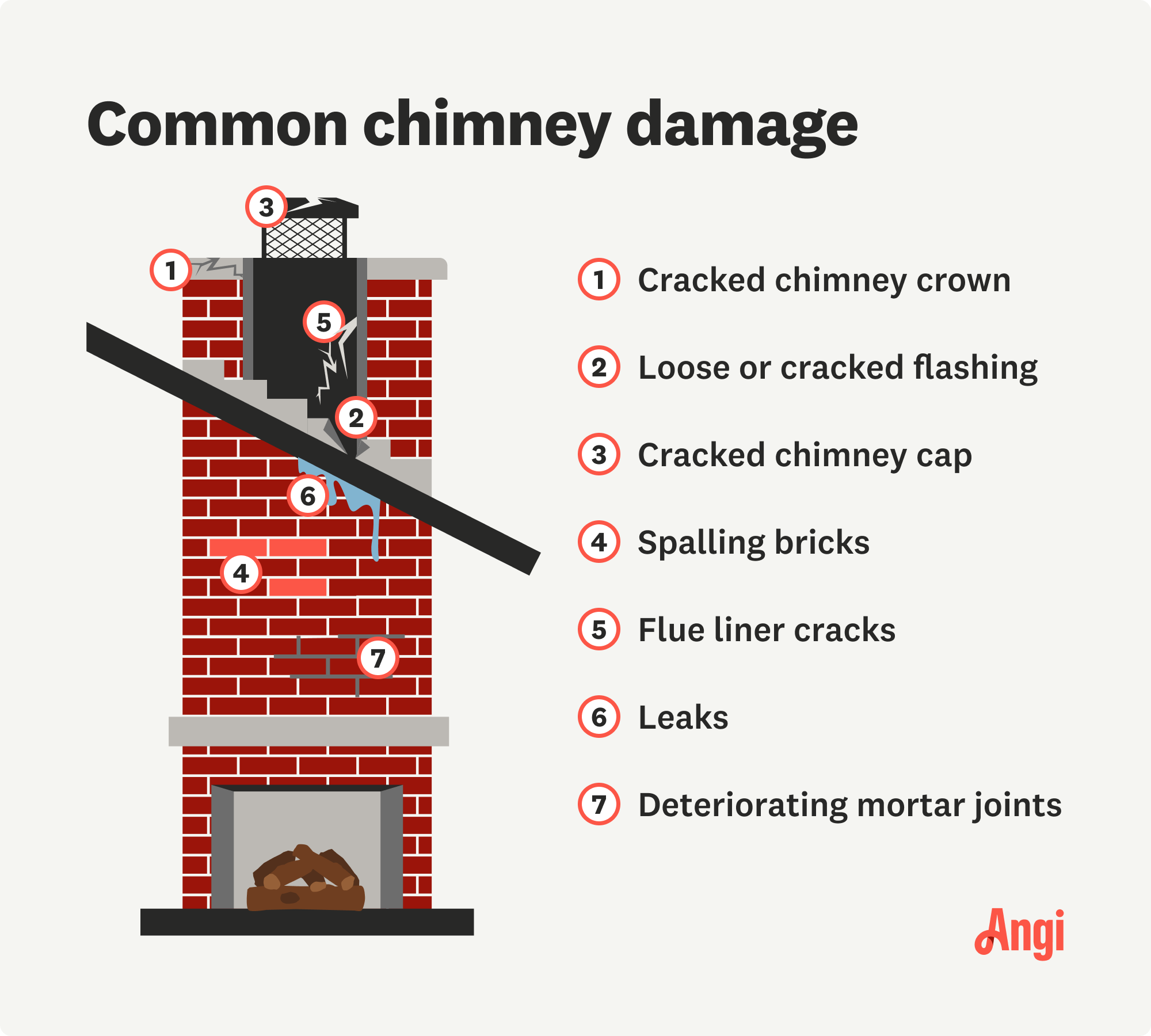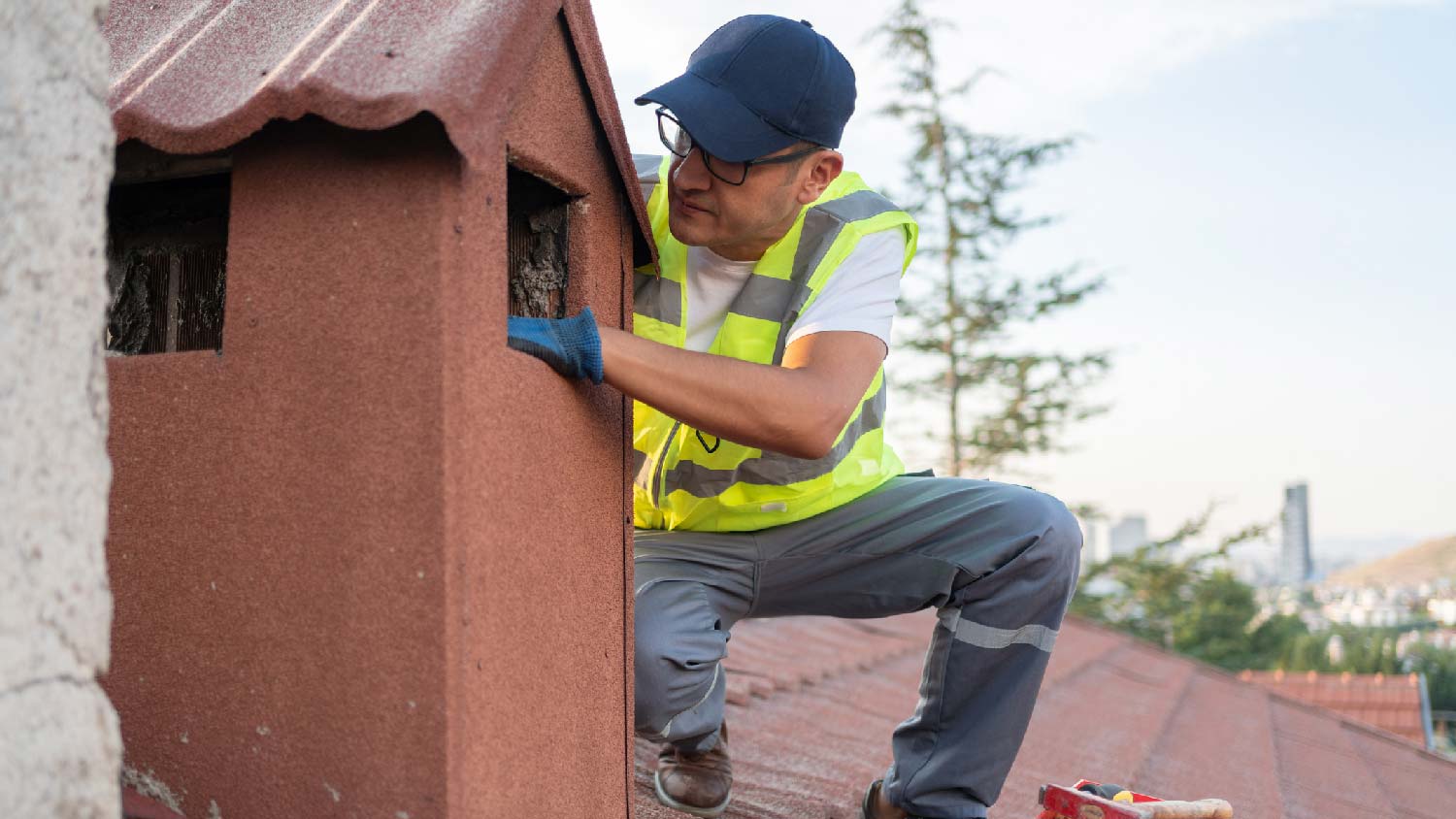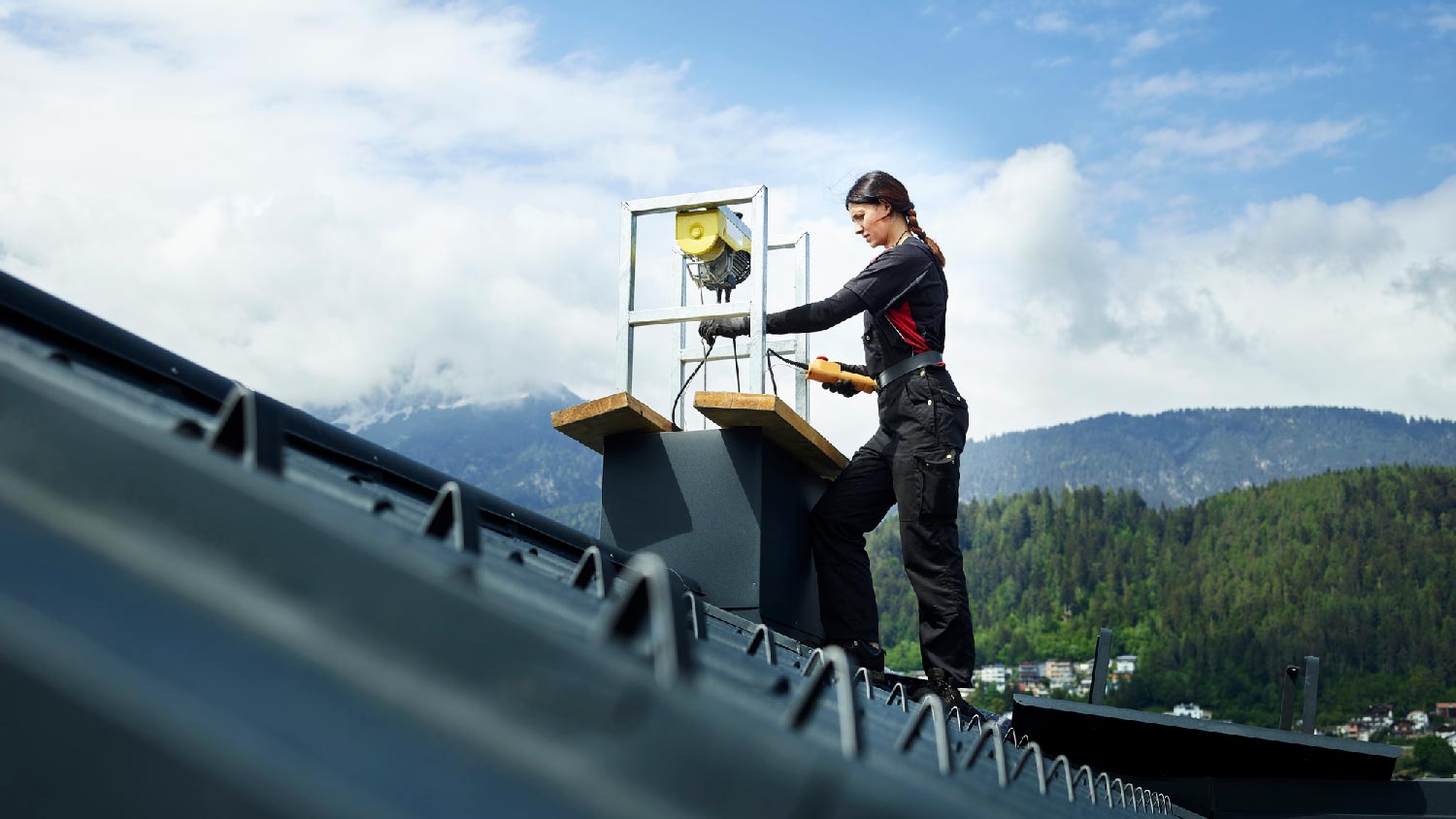
Sealing your chimney is one of the most affordable ways to prevent water from penetrating the bricks. This guide breaks down the cost to seal a chimney.
Don’t let a little water put a damper on your fireplace usage


Common causes of chimney leaks include a missing chimney cap, a cracked chimney crown, and damaged flashing.
Most chimney leak repairs involve working on the roof and are best left to the pros.
Chimney flashing replacement costs an average of $400 to $1,600.
Replacing a chimney crown costs an average of $400 to $2,200.
If you rely on your fireplace for warmth and efficiency in the winter, the last thing you want is a leak making it potentially unusable. As soon as you notice water coming from in or around your chimney, it's time to take action. This guide walks you through the potential causes of your leak, how and where to identify the problem, and the steps to take to solve and prevent chimney leaks.
A chimney without a cap is essentially an open hole in your roof. As water enters your chimney flue, it will erode mortar joints and eventually cause leaks and stains around your chimney.
Solution: If you don't have a chimney cap, measure the flue tile at the top of the chimney so you can purchase the proper size. The ideal cap is stainless steel and includes a bonnet or roof twice as large as the flue opening. Follow the manufacturer's instructions to properly fasten the new cap to your flue opening.
Beneath the chimney cap may be a chase cover with screens on each side to prevent sparks from escaping. The cover may be sagging enough that water pools on top, or water may enter through openings created by fasteners.
Solution: Chase cover replacement is a simple DIY job. Simply remove the chimney cap and fasteners affixing the current cover and swap out your existing cover for a stainless steel replacement of the same size. Follow the manufacturer's instructions to affix the new cover.

The layer of mortar on top of the chimney is called a chimney crown. The crown prevents moisture from entering gaps in the lining and masonry. When the crown is cracked, moisture can get through and work its way down through your chimney.
Solution: Proper crown repair involves removing the entire crown and rebuilding it using cement forms and rebar. This job is best handled by a pro due to the risk of damage to the rest of the masonry.
However, you may be able to patch small cracks using mortar and then apply a crown coat brushable sealant overtop. Monitor the crown each year to ensure that new cracks don’t form, and contact a chimney pro if they do.
Mortar and sometimes bricks themselves can crack and erode due to wind, water, and temperature changes. Water can then penetrate these cracks. Deteriorating brickwork may be more of an issue in areas with extreme weather and frequent freeze/thaw cycles.
Solution: You can use mortar caulk to temporarily repair cracks you notice in your chimney's bricks and mortar. A long-term fix requires masonry skills since you'll need to remove soft mortar joints and damaged bricks before tuckpointing or installing new bricks.
Chimney flashing creates a waterproof seal between the roof and the chimney. It typically lines the base of a chimney to cover gaps where it meets the roof. Damaged or improperly installed flashing won't function properly. Flashing can fail due to rust, damage, or old sealant that's lost its flexibility.
Solution: Replace any failing sealant with a store-bought flashing repair kit, which includes reinforcement fabric and flashing sealant. Carefully scrape away defective sealant and replace it with the materials from your kit.
Otherwise, full replacement is needed. This involves removing the existing flashing, shingles, and tar paper and affixing new materials in their place. Only a trained roofer should handle this work since mistakes can lead to serious structural damage beyond the existing leak.
A chimney cricket is a wedge-shaped structure on a roof that spans the width of an eave-side chimney to divert water around its sides. Without a chimney cricket, water tends to pool behind the chimney as it rolls down the roof. This can cause leaks even with adequate flashing in place.
Solution: If your chimney sits by the eaves of your home and lacks a cricket, building one may solve your leak. However, this is a challenging job that involves adding to the existing structure of your roof, so you'll want to hire a contractor for construction. The job involves measuring the chimney width and pitch, cutting away shingles, tucking flashing underneath, and sealing the roof.
This issue is common in gas fireplaces since they emit exhaust that can gradually form condensation inside a chimney. Without a proper liner, moisture buildup in the chimney can seep out into walls and attics.
Solution: A simple solution to condensation from gas fireplace exhaust is to install a chimney liner as a barrier between the moisture and the surrounding brick. Measure your chimney height and purchase a liner kit. Installation will vary by manufacturer but typically involves lowering the liner slowly through the chimney and attaching it to both your fireplace exhaust and the flue opening.

Chimney repair costs $160 to $750 on average, but the cost to fix a leaking chimney will vary depending on the cause and the required repairs. For example, the cost to replace chimney flashing is $400 to $1,600 on average. Meanwhile, the average cost to replace a chimney crown is $400 to $2,200. For accurate prices in your area, contact a few local chimney services for quotes.
Chimney leak repair can be dangerous. It involves working on your roof and working on areas of your home where mistakes can lead to costly damage. Be sure you have safe access to your roof and proper protective gear if you attempt a DIY repair.
Because any improper repairs to your roof, masonry, or structural elements of your home can end up costing you much more in the long run, you’re best off contacting a professional chimney repair service near you to ensure a safe and lasting repair job backed by a warranty.

The best way to prevent chimney leaks is to practice proper chimney maintenance. Schedule professional maintenance at least once per year. A local chimney sweep will remove dangerous creosote buildup and inspect your chimney for damage. They can advise you when they notice problem areas that may turn into leaks without repair.
Proactive repairs can prevent the costly water damage that often results from leaks. Never use your chimney without ensuring it’s safe to do so.
From average costs to expert advice, get all the answers you need to get your job done.

Sealing your chimney is one of the most affordable ways to prevent water from penetrating the bricks. This guide breaks down the cost to seal a chimney.

Discover the average chimney tuckpointing cost, key price factors, and expert tips to help you budget and save on your next chimney repair project.

Chimney liners are important for fire safety and energy efficiency in your home. Learn how much chimney liners cost based on type, size, material, and other factors.

Wondering what is a chimney damper? A chimney damper is a small flap that allows you to open and shut the airflow through your chimney.

The process of how to paint a brick chimney comes with a few important caveats, but it’s definitely a worthwhile project to keep your brick strong and in good shape.

Many issues cause chimney leaking inside a house. Here is how to identify the source of the problem and take steps to prevent future issues.